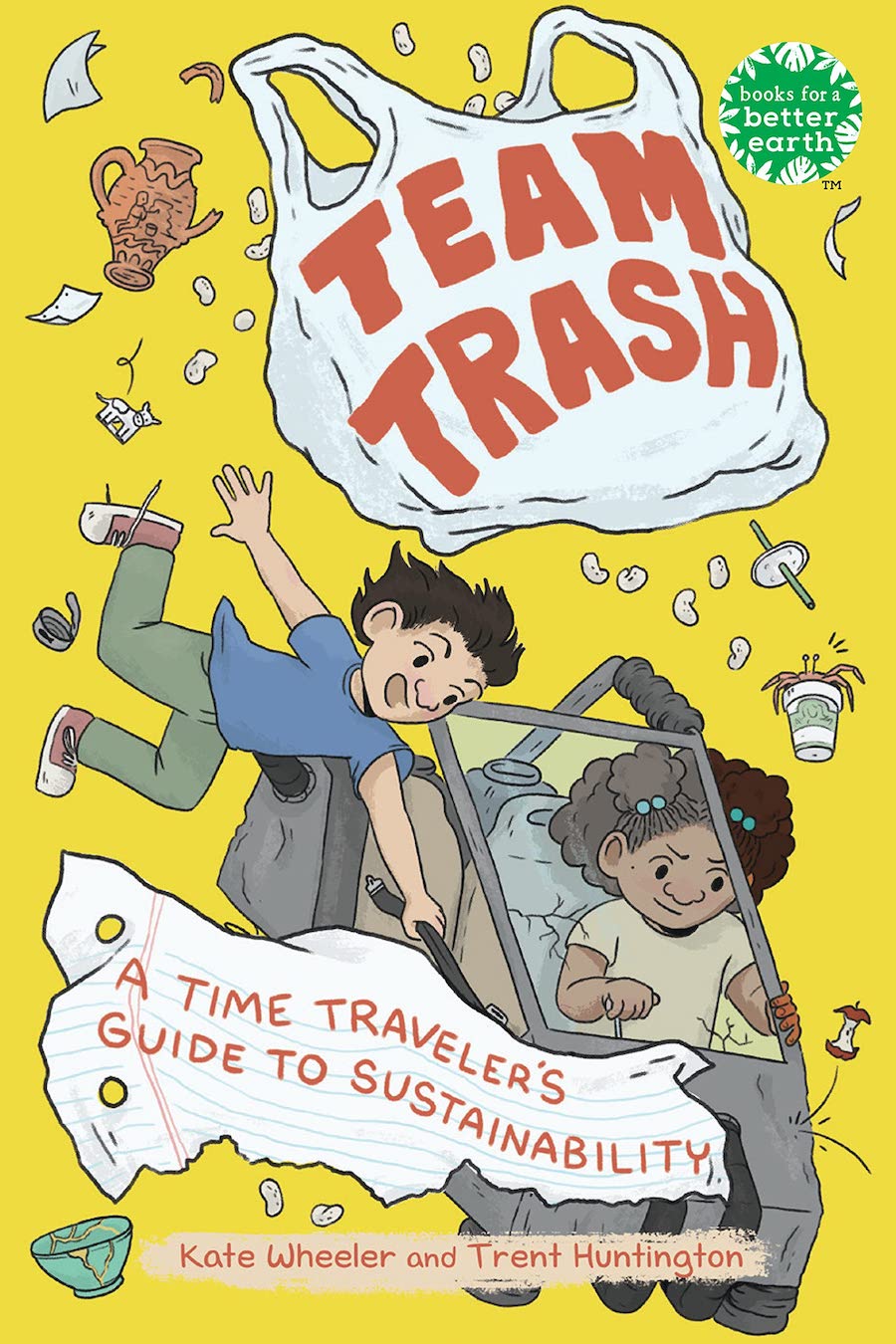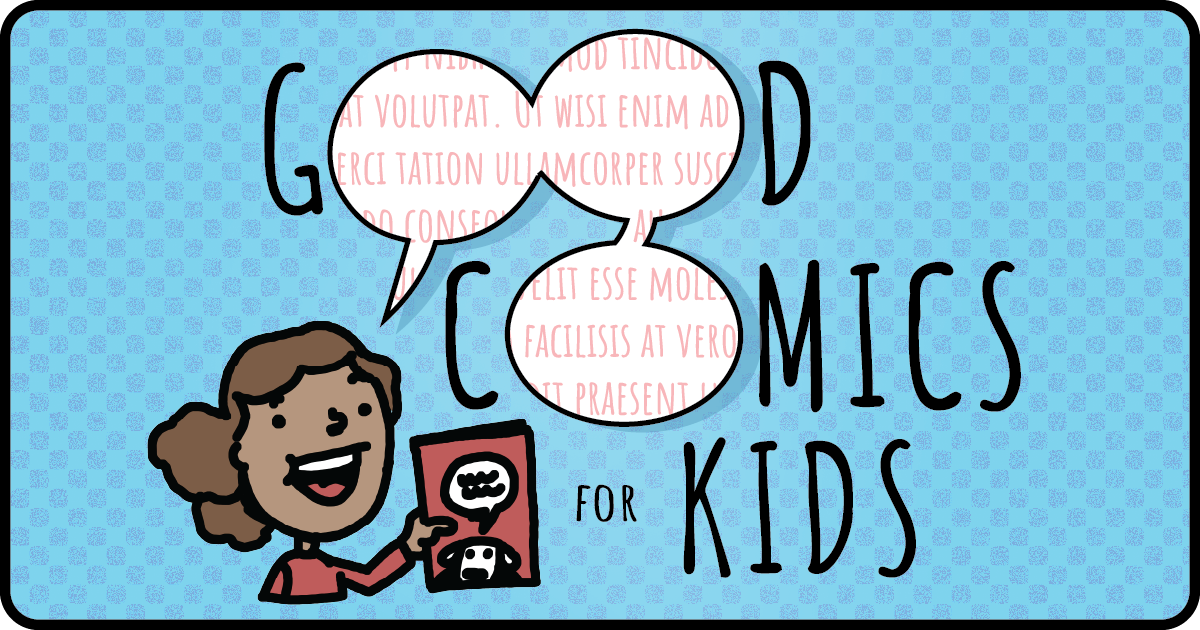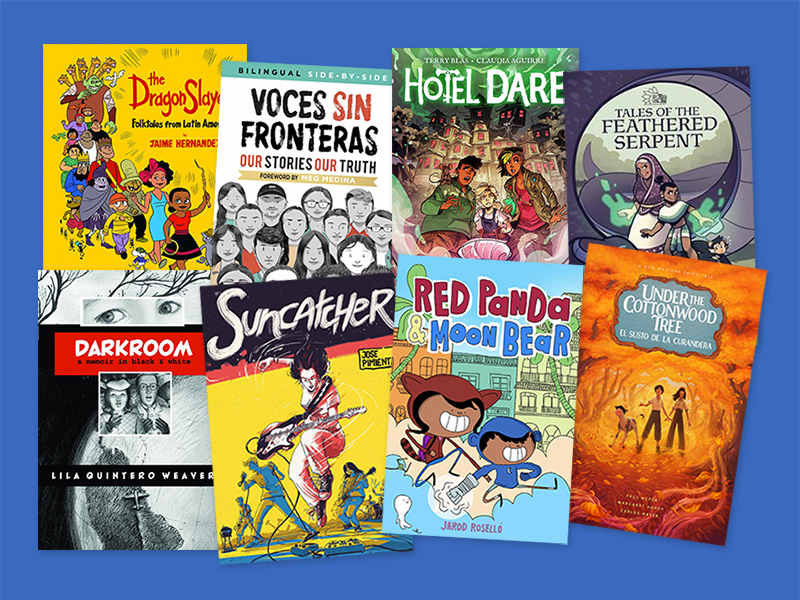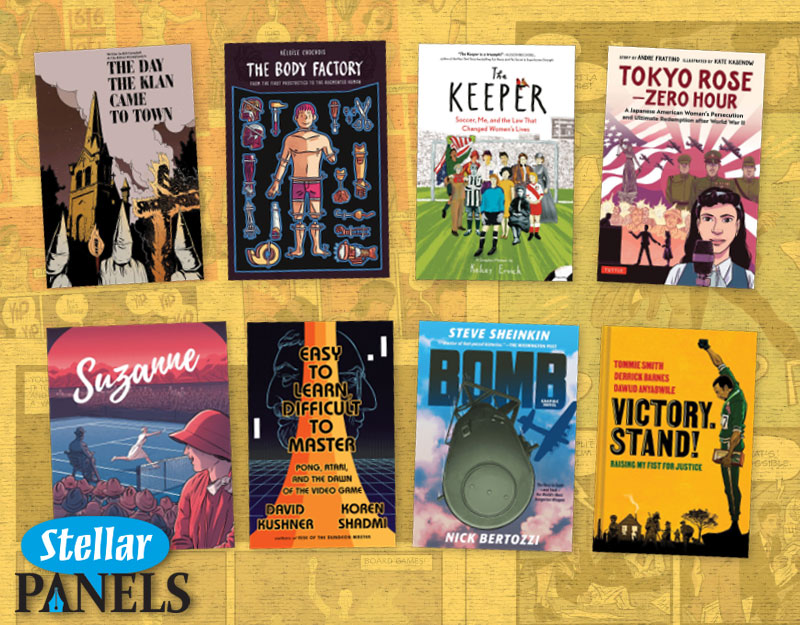
Team Trash: A Time Traveler’s Guide to Sustainability | Review

Team Trash: A Time Traveler’s Guide to Sustainability
By Kate Wheeler and Trent Huntington
Holiday House; $22.99
Gr 5-9
Charlie is excited for the assignment of partners in her school’s upcoming Sustainability Science fair, but she’s running late—so late that rather than her hoped-for partner, she gets stuck with budding artist Oliver, who tries to sell her on making their project a comic book about a superhero turtle who battles plastic pollution in the ocean with a sword. She was thinking more along the lines of a car powered by cattle-produced methane.
The two kids are the protagonists of Team Trash: A Time Traveler’s Guide to Sustainability, and what they end up producing is a book on the history of recycling, featuring Oliver’s illustrations. They end up doing their research in a most unusual way, however. Rather than researching online and/or using library books, they experience the history of recycling firsthand, when they accidentally set off another team’s project, a working time machine. One that just so happens to be pre-programmed to take them to various times and places illustrative of the history of recycling and important innovations in sustainability… and doesn’t let them leave for the next stop until they’ve gathered sufficient data.
ADVERTISEMENT
ADVERTISEMENT
And so the pair find themselves in first century Pompeii, where they meet a man re-using broken tiles and other trash to repair a portion of the city wall, and Edo period Japan, where they meet another man trading candy for trash, the easiest source of new materials. (Special translator wristbands take care of the language differences, if you’re wondering.)
Eventually they witness 18th century recycling of clothes fibers into paper, trash-eating pigs in 19th century New York City, the promise of plastics in the 1950s, the infamous traveling garbage barge of the 1980s and, finally, the creation of packaging made from cellulose and the passage of a landmark waste reduction bill in 2021.
At each stop they meet suspiciously friendly—and suspiciously unsuspicious–adults who tell them all about the subject at hand, while we see excerpts of the book that Charlie and Oliver are gradually assembling through their travels.
Oliver’s art looks a lot like that of Kate Wheeler, who draws the comic, only his appears in black and white, while hers is full color. Her style is simplified but not simplistic, with warm, inviting character designs and a nice, steady flow to the story-telling.
The result is “Pigs, Plastic and Politics” by Charlie and Oliver, excerpts of which readers have essentially already read while the pair was doing their time-traveling research.
The book—Team Trash, not Charlie and Oliver’s book-within-the-book—is, of course, rather nakedly didactic, climaxing with instructions for how kids can write their local governments and big businesses to request the disincentivization of single-use plastics, fund recycling infrastructure, and so on. The time-travel story is engaging enough that it softens the preaching, though, and while one could use the word “propaganda” to refer to the book, I’d prefer the connotations of “advocacy,” which are gentler and more positive than the negative ones associated with propaganda.
Besides, it’s advocacy that happens to be for a good cause, and that makes experiencing it all the easier to forgive. Is it pedantic? Maybe. Is it educational? Definitely. But thankfully it reads more like a story than a lesson.
Filed under: Reviews
About J. Caleb Mozzocco
J. Caleb Mozzocco is a way-too-busy freelance writer who has written about comics for online and print venues for a rather long time now. He currently contributes to Comic Book Resources' Robot 6 blog and ComicsAlliance, and maintains his own daily-ish blog at EveryDayIsLikeWednesday.blogspot.com. He lives in northeast Ohio, where he works as a circulation clerk at a public library by day.
ADVERTISEMENT
ADVERTISEMENT
SLJ Blog Network
Notes on April 2024
Lifetime Achievement Awards and Upcoming Books: A Talk with Christopher Paul Curtis
Navigating the High School and Academic Library Policy Landscape Around Dual Enrollment Students
ADVERTISEMENT







